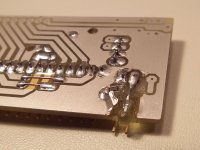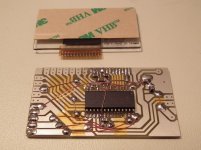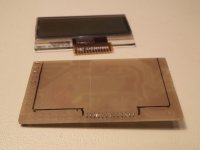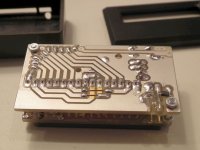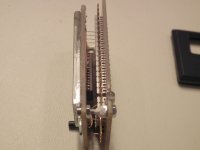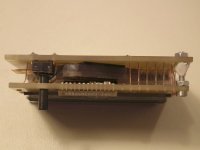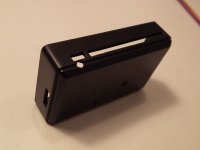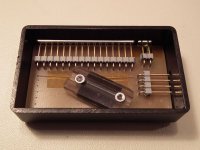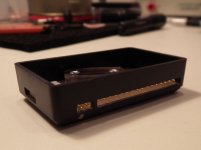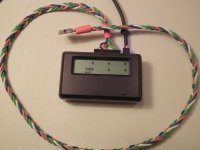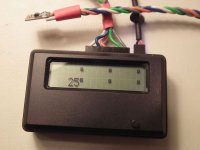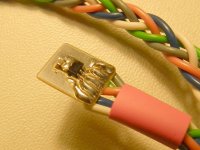While filling my shopping cart at Farnell, I found 2 schottky diodes that might be just perfect for the DESAT pin protection on the ACPL-337J, as an alternative to the MBR0540:
http://dk.farnell.com/avx/sd0603s040s0r2/diode-schottky-0-2a-40v-sod-523/dp/2400207
http://dk.farnell.com/nxp/1ps79sb30/diode-schottky-sod-523/dp/8734097
They are both very small (SOD-523) and have extremely low reverse leakage current. The one from AVX is probably the best with regards to forward voltage (should be 500mV or less) and surge capability. But the datasheet does not have a graph showing the reverse leakage current vs. reverse voltage at different temperatures like the one from NXP does. According to the graph in the datasheet, the one from NXP only has a 200µA reverse leakage current at 10V reverse and 125°C, so even at very high temperature, it will not leak all the DESAT current. I will have to test this myself for the one from AVX.
My application has a max voltage of 50V. So if I assume a worst case voltage transient of 100V at the DESAT input, the current through the schottky will be limited to 100mA by the 1k DESAT resistor. So a 200mA average current diode should be ok. According to the ACPL-337J datasheet, the maximum allowed negative voltage on the DESAT pin is -0.5V, so the schottky should have a forward voltage of 500mV or less, and the one from AVX seems to be max 450mV (again I have to test this parameter as there are no curves in the datasheet) but the one from NXP will have a too high forward voltage at currents above 100mA. So it's kinda right there on the edge for the one from NXP, I hope the one from AVX will prove to be as good as stated in the datasheet, even over temperature.
I'll order both types for test and comparison.
Since I'm a sucker for small footprint layouts, and I have space constraints in my design, I also found a SOD-523 10V zener diode for protecting the DESAT pin from overvoltage:
http://dk.farnell.com/rohm/edzte6110b/diode-zener-sod-523-10v/dp/1679972
Together with the 0603 size blanking capacitor, those SOD-523 devices make a compact design




